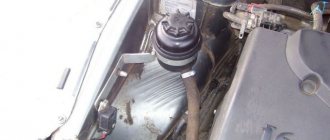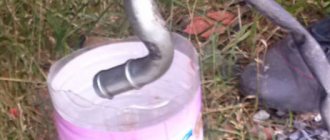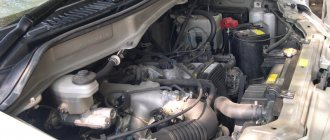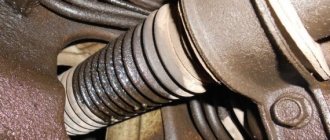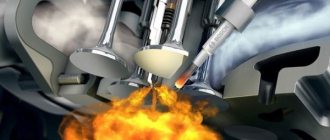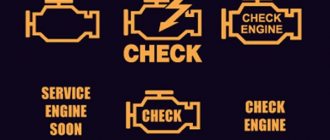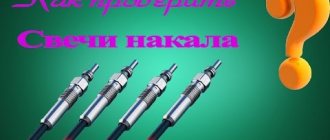Power steering greatly simplifies the work of the motorist. With hydraulics, the steering wheel is much easier to turn, even when the car is stationary. But if there is a hum from the power steering pump, then problems arise: you shouldn’t expect anything good from noise that comes from nowhere, and most likely you will have to make repairs. The source of the hum can be different, but the howl itself can be both constant and periodic. It all depends on the position of the steering wheel. Why does the hum occur, and can this problem be eliminated without repair?
Power steering makes noise when the car is cold
Often motorists have to observe this - the power steering hums when cold when the engine is started, and the colder it is, the louder the noise is heard. The howling sometimes lasts 20 seconds to five minutes, and then the extraneous noises subside. The reason for what is happening cannot be explained, so each case must be considered individually. The most possible reasons for this phenomenon:
Poor quality liquid thickens in the cold;
There is not enough fluid in the system itself;
The hum is not coming from the power steering pump, but from the water pump bearing.
Hydraulics uses different types of fluids that differ in viscosity.
Power steering hums after replacement
Sometimes the power steering starts to hum after an oil change. Unpleasant sounds can be caused by the pump if the system has been filled with oil that is less thick than it was before. The fact is that between the inner surface of the stator ring and the rotor plates the output increases. Vibration of the plates also occurs due to the unevenness of the stator surface.
To prevent such a situation, we advise you to use the oil recommended by the manufacturer. This will protect your car from system breakdowns.
It is also possible that a hum may occur after replacing the high-pressure power steering hose. One of the reasons may be a poor-quality hose. Some service stations make the mistake of installing ordinary hydraulic hoses instead of special hoses designed for high pressure and operation in the power steering system. This can cause airing in the system and, accordingly, a hum. The remaining reasons are completely similar to the cases listed above (knock on cold, hot).
Is repair necessary if the power steering is noisy?
If the hydraulics are noisy and the fault has not yet been detected, then you can try to diagnose it yourself. To do this you need:
Place the car on a level place;
Start the engine;
Check for fluid leaks;
Remove the expansion tank cap and check the level;
See what color the liquid is;
When turning the steering wheel, make sure that there is no air in the reservoir.
If the fluid disappears, you need to figure out the cause of the problem and add fluid.
As soon as the liquid is added, the system must be pumped and all the air must be squeezed out. If this is not done, the power steering will continue to hum. The hydraulics are pumped in this way:
You need to start the engine and turn the steering wheel from side to side several times;
If the liquid leaves, it needs to be added;
After turning the steering wheel several times, make sure that the howling has stopped and there is no air in the system.
Unfortunately, it is not always possible to restore the steering functionality. If the hum continues as before, the reason is most likely in the power steering pump.
Extraneous noise - crunching: causes and methods of solving the problem
The CV joint can cause a crunching noise when turning the steering wheel.
Crunching is usually a consequence of small noises (clicks and clatters). It may be the result of a serious breakdown, or it may be a minor malfunction.
The CV joint is in constant motion and bears heavy loads, which minimizes the time it is used.
It happens that you hear a crunching sound when you turn the steering wheel while driving. At the same time, it seems that the car literally crunches. You often hear noise when turning in a certain direction.
Owners of front-wheel drive and all-wheel drive cars face this problem. The noise is associated with a broken grenade (CV joint).
You can check the crunch when turning the steering wheel in place.
Changing power steering fluid
Every vehicle needs repairs sooner or later. The power steering must also be kept in good working order. To prevent it from bothering you for longer, you should change the fluid in it on time, which is usually changed twice a year. This is done if:
the fluid has become dark or dirty;
the car is still new, and it is not clear what exactly the expansion tank is filled with;
The power steering hummed.
It’s easy to change the fluid in it, all you need to do is:
Turn off the power unit and open the car hood;
Raise the front of the car so that the front wheels rotate freely;
Unscrew the cap on the power steering reservoir;
Use a syringe to pump out the contents of the expansion tank;
Use pliers to loosen the clamp and then pull off the return line;
Make a plug and secure it to the fitting;
Then you need to flush the system;
Remove the plug, replace the muffler and secure it with a clamp;
Replace the fluid in the system;
As soon as air stops escaping from the expansion tank, the job can be said to be done. All the air will need to be expelled, since after starting the engine the liquid may become covered with foam and the power steering pump will hum.
There is no need to start the unit while pumping air.
It is difficult to imagine a modern car without power steering. But some 15-20 years ago, this was commonplace, almost all drivers turned the steering wheel only when the car was moving, since it was much more difficult to do this on the spot.
Today, cars are equipped with various designs of power steering, the main place being divided between hydraulic power and electric, but it is also not uncommon for a car to be configured with electro-hydraulic power steering. Considering the fact that power steering is considered the most common and popular, we will analyze in detail the methods and methods for checking the serviceability of the power steering pump.
The hum appears in the extreme positions of the steering wheel
Many drivers have heard advice recommending not to leave the wheels in the extreme left or right position. This is partly due to the fact that in this case the power steering pump operates at full power, which often causes additional noise. Please note that this situation is not considered an emergency. Moreover, some automakers warn drivers about such an unpleasant manifestation, which has no consequences.
But this does not mean that a hum that appears when the steering wheel is turned all the way (no matter in which direction) cannot be caused by a certain malfunction.
In any case, you should play it safe by diagnosing the mechanism. However, the causes of malfunctions will be the same: depressurization of the line, decreased drive belt tension, hydraulic pump malfunctions, oil contamination.
The only malfunction specific to this case is the following: in the gearbox (in its upper part) there is a valve box, the purpose of which is to redistribute the flow of working fluid. When the steering wheel is turned all the way, the bypass valve closes, and then the oil begins to circulate through a “small circuit”, similar to a car’s cooling system. This means that the liquid is practically not cooled, which is not good for the gearbox. In particular, overheating of the liquid threatens to cause scratches and scuffs on the surface of the cylinder walls, as well as on the valves of the hydraulic pump. In winter, the oil is usually thicker, but in summer overheating is a real problem, so you should not keep the wheels turned to the maximum for more than five seconds.
Basic pump malfunctions
1.
Increased play and failure of the working shaft bearing.
2.
Damage to the integrity of the pump shaft seal.
3.
Wear and scuffing of rotor blades.
4.
Malfunction of the pressure reducing valve.
5.
Loss of seal in the pump casing.
6.
Drive belt slipping on the pump pulley, low tension.
What are the signs and symptoms of breakdowns?
— Airing of the working line.
This problem can usually be caused by two malfunctions
. One of them is considered to be a violation of the tightness of the power steering pump housing, as well as cracks in pipelines, hoses and connecting elements.
The second breakdown is air leakage through a faulty shaft bearing and its seal, which is the most common problem, appearing much more often than the first. The main sign of airiness in the oil line is the appearance of bubbles in the amplifier reservoir, and foaming and squeezing out of liquid from under the reservoir cap are not uncommon cases.
— Humming and noise during operation.
If the power steering pump begins to make noise and a strong hum
when the engine is running, most likely the reason lies in its inability to create the required pressure. This happens mainly due to wear of the rotor blades and their “hanging” in its body. Also, this symptom may be caused by a warped rotor, resulting in wear and play of the power steering pump bearing.
In the winter season, the hum of the pump when it malfunctions may not be significant until the working fluid warms up; it also turns much easier than after a couple of minutes of warming up. Many car resellers often mask this defect by replacing the fluid with a more viscous one. Distinguish such a “masquerade”
Not every amateur succeeds.
The bearing has failed
If the bearing fails, the hum and howl in the pump area will be constant, regardless of the load on the steering mechanism. It is not difficult to check such a breakdown; just with the engine turned off, swing the pump pulley in a vertical plane. If the bearing is in good condition, there should be no play
. It would be a good idea to check the bearing with a phonendoscope or a long screwdriver with the engine running; knocks, grinding noises and loud noise are not acceptable.
— Whistle when turning the steering wheel
A fairly common malfunction, especially on cars that are extremely carelessly maintained. The essence of the problem is the slipping of the belt on the pulley of the amplifier pump, this happens at the time of its active operation, that is, when the steering wheel is in motion. The reason most often lies in the stretch of the drive belt or its weak tension.
— The steering wheel becomes very heavy when driving
As a rule, with increasing engine speed, if the steering wheel becomes significantly heavier, this indicates a failure of the pressure relief valve, which maintains the nominal pressure in the entire system. To reliably confirm this version, it would not be superfluous to measure the pressure in the line with a special pressure gauge.
What is the resource and service life of the pump.
The longevity and reliability of operation of the power steering pump is influenced by several facts:
1.
Timeliness and quality of oil changes and special system fluids.
2.
Driver's driving style. With sudden and frequent re-gassing, the bearing comes out much faster than usual.
3.
Drive belt tension. If it is tightened too much, the bearing will “hum” very quickly.
4.
Holding the steering wheel in the extreme position for more than 3-5 seconds causes a colossal load on the pump rotor. Wear and tear in such operation will be clearly increased.
Despite the above facts, on average, the pumps of the hydraulic power steering system operate quite regularly for 150-200 thousand kilometers.
. Breakdowns that occur before this mileage are often just isolated cases.
Change the power steering fluid promptly
Monitor the fluid level and check for leaks
Do not rotate the steering wheel without warming up the system (3-5 minutes)
Do not use sealants or additives that seal leaks in the system.
In custody.
Repairing a power steering pump requires fairly high equipment and adherence to certain technologies. Doing repairs yourself is not always a wise decision, just like buying a contract one. In turn, replacing with a new unit would be a much better solution.
If the sound is heard both when turning and simply when moving straight and is similar to the operation of a sewing machine, especially on a cold car, then the reason may also be in the oil seal.
The “not the most pleasant” reason for the hum is wear on the working surface of the blades. There's nothing you can do about it, you'll just have to let it go. Rarely, but still, there is a malfunction of the recirculation valve, which can also produce a characteristic hum.
Check the tension of the hydraulic pump drive belt. It must correspond to the value specified in the technical documentation for your car brand.
And here is a list of what you shouldn’t do if you don’t want problems with the power steering:
- hold the hydraulically powered steering wheel in the extreme position for more than 4-5 seconds.
- When parking, continue to press on the steering wheel when the car rests the side of the wheel against the curb.
- drive for a long time with the pump not working.
- The tactic of adding oil when the system loses its tightness is dangerous.
- operating a vehicle with torn steering rack protective boots.
- operating a vehicle with faulty steering rod joints and ends.
Every third driver one day begins to hear a hum from the power steering. This noise indicates that something in the mechanism is damaged or worn out, and this is all fraught with consequences. To check what exactly the problem is, you need to carry out diagnostics and determine why the power steering is humming.
What to do if the power steering hums
Power steering (or power steering)
- a complex design that creates the necessary force so that you can easily turn the steering wheel. Despite the rather complicated device, you can figure out the reasons for the breakdown yourself. Repairs will most likely require the services of professionals, but experienced drivers can handle it on their own.
Is this noise harmful to the car?
Any hum or excess vibration is harmful to the machine. The consequences of all this can be very different, but you have to pay for everything. Another question is what price. For example, if the power steering pump hums, the pressure hose may leak, which as a result may even break. This can cause hydraulic fluid to enter the exhaust manifold and ignite, causing the entire vehicle to catch fire.
Causes of buzzing
There may be several reasons why the power steering is humming. When diagnosing, you need to check the following details.
Low fluid level
A special oil is poured into the power steering reservoir - ATF (Automatic Transmission Fluid). The level of this fluid may drop due to poor sealing of oil seals, connections, and hose rolling. Open the hood and check the level of this oil in the tank. If the level is insufficient, you must first eliminate the cause of the leak, and then replace all the oil.
Important!
Loss of hydraulic fluid begins asymptomatically.
First, the oil flows out through the steering rack end seal, but the boot prevents it from flowing out. If there is fogging near the anthers, then you need to urgently find out the cause. Liquid quality
Due to prolonged use, hydraulic oil burns out, becomes diluted and becomes contaminated.
That is, sometimes it needs to be changed, and at least once every two years or every 70 - 100 thousand km. The quality of a liquid can only be determined by eye. Open the reservoir, take a drop of ATF oil and place it on a piece of white paper. If everything is fine with the oil, its color will be burgundy, crimson or red. The fluid needs to be changed if it is brown, dark brown or black. If the smell of burnt rubber or burnt oil is heard from the reservoir, then the fluid also needs to be changed.
Steering rack malfunction
A hum in the power steering can also appear due to problems with the steering rack. To check, you need to diagnose the rack and the power steering itself. The hum from the steering rack can come from the knock of the rod on the body or from a worm pair. The solution to the problem is repair, or in extreme cases, replacement of the rack.
Aired system
If air gets into the hydraulic system, you will hear howling and grinding noises. Air could enter the pump through the fluid supply hose due to cracks or a loose connection between the hose and the expansion tank. The second reason is a clogged filter mesh in the expansion tank itself. Because of this, the liquid there will foam and bubble. The liquid in the expansion tank should not boil, it should flow freely.
Air may have entered when replacing any parts. Adding fluid does not mean solving the problem. The system needs to be flushed, the fluid replaced, and the system pumped. After this, the air should come out completely.
Drive belt wear
If the power steering starts to hum when you turn the steering wheel, then the reason is the drive belt, which is worn out or loose. Tighten it or install a new one.
Pump fault
The most unpleasant breakdown, and the most financially costly, is the breakdown of the power steering pump. Failure can occur due to worn bearings or seals, or a broken pump impeller.
If the pump is broken, then you can not only hear a hum, but it will also be reflected in the steering wheel - it will be more difficult to turn it. For diagnostics, you need to go to a service station to see professionals.
Tips for using power steering
Power steering, like any other vehicle unit, needs to be serviced periodically. No automaker makes any special recommendations. All you need to do with the oil in the power steering is check its level, but do not change it, and if necessary, supplement the missing volume.
This is interesting!
Domestic experts believe that the oil definitely needs to be changed.
Allegedly, the power steering is extremely sensitive to oil, or rather, to its condition, therefore it needs to be replaced at every maintenance. The frequency of replacement depends on the intensity of use of the vehicle. The norm is once every 2 years.
For power steering, use only the oil recommended by the automaker specifically for your car model. Don't buy cheap oil.
If it happens that the oil has leaked, and you somehow need to get to the service station, then you need to pour automatic transmission fluid into the reservoir along with engine oil. You cannot use mixtures of different types of hydraulic oil for prolonged operation of the hydraulic booster.
If you do mix oils, you need to flush the entire system before adding new oil to the system so that it does not mix with the remainder of the mixture. Flushing the system is mandatory!
Wear products form vapors that clog calibrated holes and are an abrasive material that contributes to wear of mechanisms.
Be sure to keep an eye on the power steering pump drive belt. If there are problems with it, then a squeak will come from under the hood. The problem could be a worn pulley or belt, or a broken pump. Do not tighten the belt again - the pump will work even less.
Curb stones, or rather running over them, are a problem for owners of cars with power steering. It doesn't have feedback, so you won't get full steering information, meaning you won't always know what's going on with the wheel. When you jump onto a curb, you will feel a slight push rather than a strong tug. The power steering pump may produce high pressure to maintain the steering rack position. The wheels will be fixed, that is, the impact will be hard. As a result, you can get damaged gears, drives, steering rod joints, even a jammed or deformed steering rack. A similar situation occurs if you press too tightly against the curb. The power steering will instantly respond to turning the steering wheel, and if the wheel is limited in movement, then there is no need to put pressure on the steering wheel.
Never step on the gas while waiting for a parking space to become available.
In this case, the wheels are turned at a large angle, and the wait takes more than half a minute, so the pressure in the power steering system increases significantly. This is fraught with flying out or deformed sealing elements or a broken pump. The working fluid may also overheat, and this will degrade performance.
In winter, in cold weather, you cannot start with a “cold” engine, since the working fluid is too viscous, that is, it will not reach the valves and calibrated holes well, in general, it increases the load. There are many reasons why the power steering makes noise, but the result is the same - a non-functioning car. To prevent this, get diagnosed on time. Good luck on the roads!
Subscribe to our feeds at
The power steering is a unit that allows you to use the vehicle with greater comfort. But, like any other mechanism, power steering is characterized by certain malfunctions. What to do if you hear a hum from the power steering when you turn the steering wheel and how to solve this problem - read below.
Why is grinding heard and how to deal with it
If you hear a grinding noise when you turn the steering wheel, this indicates wear on the steering system joints or front suspension. To find out the exact cause, it is worth carrying out diagnostics at a service station and replacing the failed spare part.
Noise can occur when turning the steering wheel: a grinding sound when driving, or when the car is stationary. The cause of this noise lies in the failure of the support bearings of the strut or lower ball joint.
If you hear a grinding noise in the wheel when you turn the steering wheel, there can be many reasons. Experienced drivers advise contacting a car mechanic, driving the car into an inspection pit and having a look. Among the reasons are:
- The rubber on the cardan outboard bearing is torn. Stones and rubble can get into it;
- The grinding noise may occur when the pads rub against the discs;
- Another reason could be a loose locking ring.
In sub-zero weather, when turning the steering wheel all the way, a grinding noise is heard due to lack of lubrication. In this case, additional application of lubricant will help.
Possible causes of hum
The power steering mechanism itself is quite simple, so if necessary, you can always figure it out yourself. Accordingly, if the power steering hums, a whistle is heard when turning hot or cold and the unit hums, you can find the cause on your own. However, in order to understand why the power steering hums when cold or hot, it is necessary to accurately diagnose the symptoms. Today, experts identify several possible signs that can provoke a hum.
So, why does a hum start when turning on a hot or cold engine and what to do in such cases? One of the main reasons is the poor condition of the oil in the system. It's no secret that any consumable material in a particular vehicle system is not eternal, even despite the fact that manufacturers assure that oil is filled for the entire life of the car. Therefore, if the power steering howls, then one of the reasons may be the consumables.
If you do not change the fluid on time, then both cold and hot will cause a hum when turning, so the condition of the oil must be checked first. The working substance must have a primary shade; as for the level, it must also be optimal, so if you notice that there is not enough oil in the system, it would be better to top it up. It is not recommended to mix oils, only if they fully correspond to each other in composition and additives. As for replacement intervals, it depends on the use of the vehicle, but on average this fluid is changed once every two years.
If the lubrication is really bad, then you will notice how the steering wheel will be more difficult to turn when turning the car on a cold or hot engine. So if you make extra efforts and hear a hum, then most likely the problem lies in the consumables.
Another reason why the system whistles when turning cold or hot is incorrect operation of the steering rack; as a rule, the cause of device failure is temperature. As a result of sudden temperature changes, the mechanism may not work correctly.
In addition, the hum also occurs as a result of salt entering the system, which remains on the roads after being covered with ice. When it gets on the components of the assembly, such as oil seals and anthers, salt corrodes them, causing the device to whistle, but not because of corrosion of the oil seal, but because of oil leakage, which is a consequence. To resolve the issue, you need to remove the device and repair it.
As practice shows, in most cases it is not so easy to repair, so the problem is usually solved by replacing the component. In addition, the power steering often whistles due to the fact that the drive belt is worn out or weakened; if this is the case, then first of all it is necessary to carry out diagnostics. If the device whistles while turning, then try tightening the strap; if it is worn out enough, then it only needs to be changed. If a hum appears regularly, then over time this can affect the vehicle’s handling, especially since vibration of the steering wheel can contribute to the appearance of such sounds (video author: Chevrolet Aveo).
The pump should be highlighted separately. Since its main purpose is to supply working fluid to the unit, if it fails, the oil may enter the system unevenly or not at all. Then the power steering whistles. If the problem truly lies with the pump's performance, then this component will need to be replaced. There is also a bearing noise.
Other additives for power steering
Hi-Gear for power steering
Other additives can be added to the power steering system, including a product from Hi-Gear. Unlike the mentioned compounds, it contains mainly organic substances, so it acts differently. The main effect created is to restore the integrity of plastic connections and pipes, as well as eliminate microcracks that eventually lead to leaks.
You can use Steer Plus to seal your power steering. Using this composition, you can eliminate oil leaks so that you can get to the workshop on your own. At the same time, do not count on a long-term effect - after 1,000 km you need to contact a service center so that the technicians can fix the leak.
The can of the product indicates that it was created for tuning the steering system. This is explained by an incorrect translation, since in English the main meaning of the term tuning is considered to be “fine tuning” and “selection of optimal parameters.” There are other additives that improve power steering performance, creating the following positive effects:
- reduced friction and slower wear;
- easier steering rotation;
- restoration of coordination of shaft rotation with the operation of the amplifier;
- noise reduction;
- eliminating the steering wheel locking when turning it to its extreme position.
Rules for proper use
If you do not want to face the problem of hum, then the first thing you need to do is to use your car correctly. First of all, keep in mind that on vehicles with power steering, you should not hold the steering wheel in one position for too long when turning or performing a maneuver. This is because during operation of the machine, the power steering device begins to heat up, the same applies to the working fluid, and if you keep the unit in one state, the liquid may even boil. Accordingly, the problem cannot be solved except by replacing the lubricant.
Experts also do not advise leaving your vehicle with its wheels turned for a long time, particularly during the winter cold. This can also lead to undesirable consequences for the steering system. If you notice that any malfunctions have begun to appear, it is advisable to diagnose the car as quickly as possible and fix the problem.
If there are serious faults, it is better not to even try to repair the unit yourself, especially if you are not confident in yourself. The best option would be to have your car repaired at a service station. Only by identifying malfunctions in the system in time can you ensure its long-term operation.
Creaking noise when turning the steering wheel
Diagnosis of squeaking noise when turning the steering wheel
When operating the steering wheel, you can often hear a squeak when turning the steering wheel in place. There can be many reasons for this.
- The outer hinges are worn. If so, they just need to be replaced.
- The front wheel bearings are worn out. It is also possible that the hub nut may become loose. To solve the problem, you need to tighten the nuts or, if necessary, replace the bearings.
- A spring creaking when turning the steering wheel to the right, or a creaking sound when turning the steering wheel to the left may be caused by its breakdown. Replacing the spring with a pair will solve the problem.
- Loosening the bolts securing the wheel, the stabilizer bar to the body, the front suspension steering knuckle to the strut, the nuts of the silent blocks of the suspension arms.
For your peace of mind, it is better to show the car to an experienced car mechanic. He will drive the car into the inspection hole and will be able to accurately identify the breakdown or malfunction and quickly fix it.
